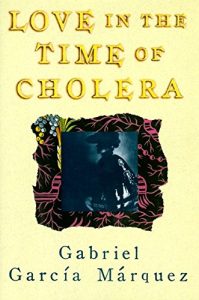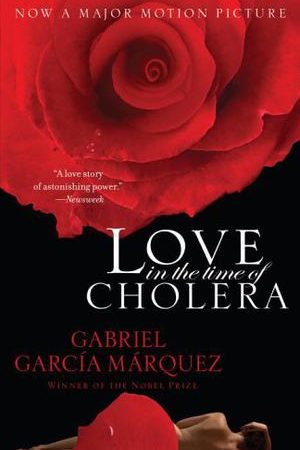The Power of Passion in Love in the Time of Cholera Introduction Hello, my name is Fred and I am a seasoned blog writer who loves to explore the themes of literature and human emotions. In this article, I will share with you my insights on the role of passion in human relationships and how
The Power of Passion in Love in the Time of Cholera
Introduction
Hello, my name is Fred and I am a seasoned blog writer who loves to explore the themes of literature and human emotions. In this article, I will share with you my insights on the role of passion in human relationships and how it affects the choices and actions of the characters in Love in the Time of Cholera, a novel by Gabriel García Márquez, one of the most celebrated authors of the 20th century. García Márquez was a Nobel laureate who is widely regarded as the father of magical realism, a literary genre that blends realistic elements with fantastical ones, creating a world where anything is possible. Love in the Time of Cholera is one of his most famous works, a novel that explores the theme of love as an emotional and physical plague, a metaphor for the suffering and pain that love can cause.
What is Love in the Time of Cholera About?
Love in the Time of Cholera is a novel that follows the lives of Florentino Ariza and Fermina Daza, two lovers who are separated by fate and circumstances, but who never stop loving each other. Florentino is obsessed with Fermina since their youth, when they exchanged love letters through her aunt’s help. He waits for her faithfully for more than fifty years, while she marries another man, Dr. Juvenal Urbino, a rational and modern physician who represents everything that Florentino is not. Florentino’s passion for Fermina is so strong that he endures hundreds of affairs with other women, hoping to make her jealous or to prove his devotion. He also tries to sabotage Urbino’s career and reputation, as well as his own happiness. However, his actions only cause more trouble and misery for himself and others.

Picture by: https://www.publishersweekly.com/
How Does Passion Affect the Characters’ Choices and Actions?
The novel shows how passion can transcend time and death, but also how it can be destructive and irrational. García Márquez uses magic realism to blend realistic elements with fantastical ones, creating a world where cholera is still prevalent, where telegrams can communicate across continents, where parrots can talk like humans, and where miracles can happen. He also uses symbolism to convey deeper meanings about love, such as flowers (which represent beauty but also decay), cologne (which represents identity but also memory), mangoes (which represent sweetness but also poison), and chandeliers (which represent light but also darkness). He also uses irony to contrast the expectations and realities of love, such as when Fermina rejects Florentino’s proposal because she thinks he is too old or too poor, or when Urbino confesses his affair with another woman because he thinks he has nothing left to lose.
The novel challenges the conventional notions of love as a romantic or idealized emotion that leads to happiness or fulfillment. Instead, it portrays love as a complex and contradictory phenomenon that can bring both joy and sorrow, both hope and despair, both life and death. It questions whether love is worth suffering for or whether it is better to let go of one’s obsession or attachment. It also explores whether love can survive in different forms or stages of life, such as friendship (between Fermina’s son Amaranta Úrsula and her husband), family (between Florentino’s daughter América María José and her husband), or old age (between Florentino himself). It suggests that love is not something that can be easily defined or measured, but rather something that has to be experienced personally.
What Can We Learn from the Novel?
The novel offers us a rich and nuanced perspective on the power of passion in human relationships and how it shapes our choices and actions. It invites us to reflect on our own understanding and experience of love, and how it affects our lives. It also encourages us to appreciate the beauty and mystery of love, even when it is painful or difficult. It reminds us that love is not a static or simple emotion, but a dynamic and multifaceted one that can change over time and circumstances. It teaches us that love is not a matter of logic or reason, but a matter of emotion and intuition. It shows us that love is not a guarantee of happiness or success, but a risk of failure or loss. It reveals to us that love is not a disease or a cure, but a force of nature that can heal or harm.
Summary Table
| Key Points | Description |
|---|---|
| Love in the Time of Cholera | A novel by Gabriel García Márquez that explores the theme of love as an emotional and physical plague |
| Florentino Ariza and Fermina Daza | Two lovers who are separated by fate and circumstances, but who never stop loving each other |
| Passion | A powerful emotion that transcends time and death, but also causes destruction and irrationality |
| Magic realism | A literary genre that blends realistic elements with fantastical ones, creating a world where anything is possible |
| Symbolism | A literary device that uses objects, actions, or events to represent abstract ideas or concepts |
| Irony | A literary device that uses words or situations to express the opposite of what is expected or intended |
| Love | A complex and contradictory phenomenon that can bring both joy and sorrow, both hope and despair, both life and death |
Comparative Table
| Florentino Ariza | Fermina Daza | Dr. Juvenal Urbino |
|---|---|---|
| Romantic | Pragmatic | Rational |
| Poetic | Realistic | Scientific |
| Obsessive | Independent | Modern |
| Faithful | Loyal | Unfaithful |
| Passionate | Reserved | Cold |
| Rebellious | Conventional | Respectable |
| Dreamer | Doer | Leader |

















Leave a Comment
Your email address will not be published. Required fields are marked with *